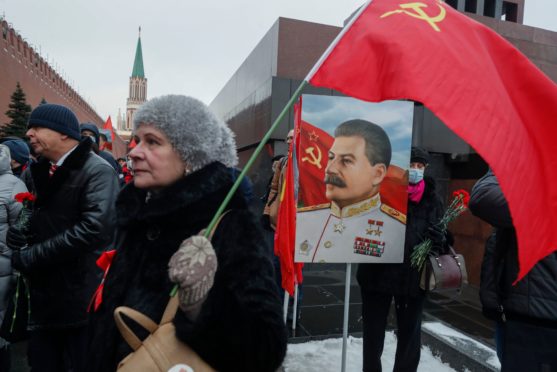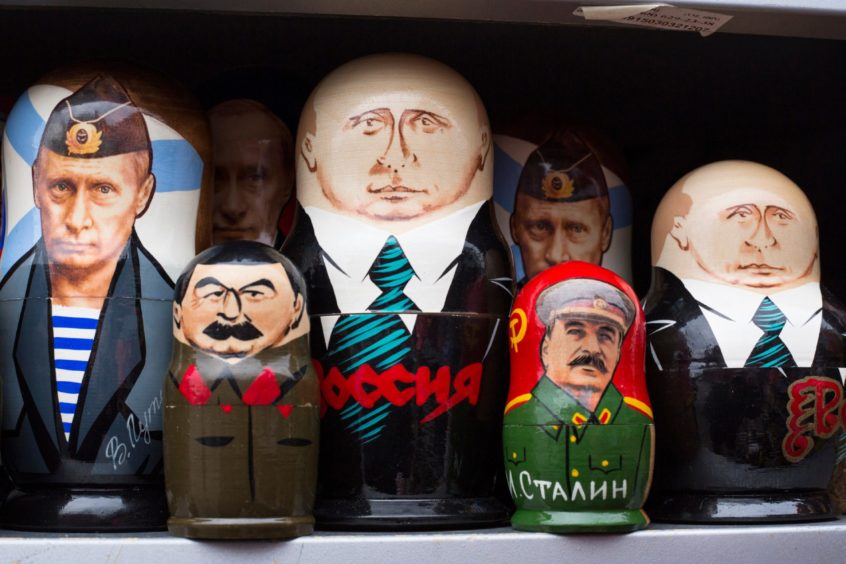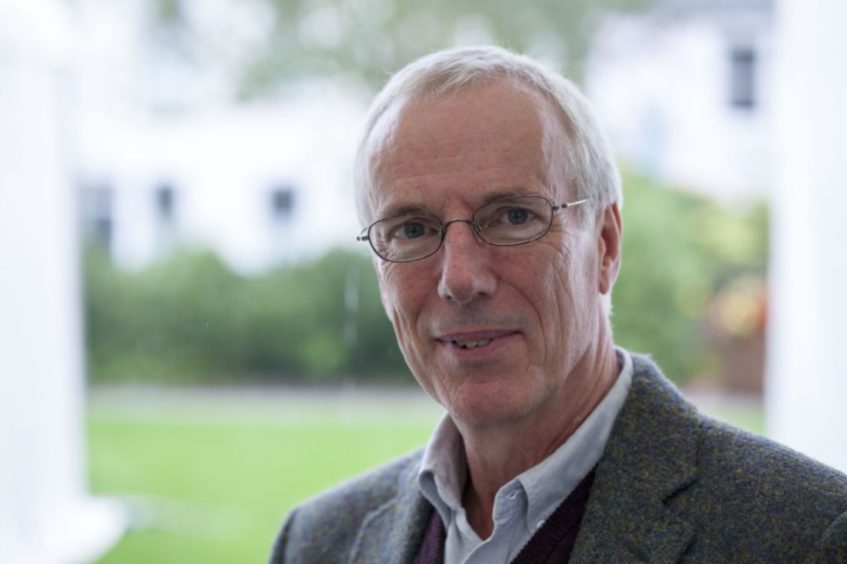
There are many, many things that people in the West find baffling about Russia.
Nothing, however, is perhaps quite so shocking as the country’s growing love affair with Joseph Stalin – the dictator who was responsible for the murder and imprisonment of millions of Soviet citizens in the middle of the 20th Century.
There is scarcely a Russian alive today who did not lose a grandfather or great uncle or aunt in the Purges that began in the 1930s. The onslaught known as The Great Terror was Stalin’s way of ridding the country of real or imagined enemies. He encouraged neighbours to snitch on each other, and children to denounce their parents. Millions languished or died in the abysmal Gulag prison camps of Siberia.
Most Europeans rank Stalin along with Adolf Hitler as the twin tyrants of the last century and yet, as an opinion poll revealed last week, almost half of Russians would like the Kremlin to erect a new monument in honour of the monster who ravaged their country.
How can that be? And what does it tell us about Russia today?
Ever since his death in 1953 Stalin’s image has risen and fallen on the political tide in Russia. He was buried in the grim mausoleum on Red Square, next to the body of Vladimir Lenin, the founder of the communist Soviet Union but, after some of Stalin’s crimes were revealed by Nikita Khrushchev, his corpse was reburied beside the Kremlin wall – where to this day you can always see fresh flowers, laid by his admirers.
For decades, the USSR’s communist leaders tried not to speak about Stalin. Schoolchildren were taught he was an “efficient manager” who “made mistakes” but that he also turned the Soviet Union into a great industrialised power and led it to a heroic victory in the Second World War.
With more than 25 million people having perished in the war (many of them of starvation in the besieged city of Leningrad)Russians have always believed they bore the brunt of the suffering, and played a greater role in the defeat of Hitler than the Western Allies.
Most Russians associated Stalin with the triumph of the Red Army and the creation of a mighty country, rather than with the millions who went through the gulag. The cult of Stalin was always strongest in Georgia where he was born, in the foothills of the Caucasus mountains. I remember during an assignment there many years ago, I was treated to a lavish meal in a Georgian family’s garden, where the guest of honour was a massive bust of Stalin which they placed at the head of the table. There were many toasts in local wine to the shoemaker’s son who became the nation’s most famous person.
In Stalin’s home town of Gori, the cottage where he was born is now a palatial museum. It was closed for a few years after the collapse of communism in 1989, but is now once again a tourist attraction, where you can see some of his famous pipes, and his death mask, displayed in an eerie light between marble pillars.
The truth about Stalin came out – for Russians – in the late 1980s. Before then you could have been imprisoned just for possessing a copy of Aleksandr Solzhenitsyn’s epic history of the prison system, The Gulag Archipelago. But now newspapers and TV stations competed to reveal the horrors of the Stalin era.
I remember visiting a waste ground outside Moscow where thousands of men and women faced firing squads during the height of the Terror. I spoke to survivors of the gulag. Banned novels and histories were published. The truth emerged of the millions who perished in state-sponsored famines as Stalin forced peasants to join collective farms.
A historical society called Memorial was set up – its aim to chronicle and remember all the victims of the Terror. For a few years the country was truly shocked by the revelations. Just as Germans had gone through a process of understanding their history under Hitler, so – it seemed – Russia and the other former communist states were coming to an understanding of the evils of Stalin’s system.
It seemed like a guarantee that the horrors of the past would not be repeated. And then came Vladimir Putin. At first, it seemed that Putin supported the de-Stalinisation project. He honoured the widow of Aleksandr Solzhenitsyn, and decreed that The Gulag Archipelago must be taught in all schools.
But Putin was also desperate to create a new vision for Russia, a new identity for a nation whose soul had been crushed by decades of communism. It was difficult. Not everyone viewed the communist past – or the West – in the same way. Many disapproved of Western “decadence”, and many hankered after the apparent stability associated with the communist period.
But there was one event, as Putin clearly understood, that united all Russians and made them feel proud: the Second World War, almost always referred to in Russia as the Great Patriotic War. Ever since 1945, there had been novels and films and songs about the conflict, feeding a kind of nostalgia about an era when the entire nation united, in the face of invasion and occupation.
That vision suited Putin very well. He, too, sees Russia as surrounded by ill-wishers. When Nato expanded its membership to take in countries that were once Soviet allies, or even part of the USSR, Putin promoted the idea that the motherland was once again under siege by foreign powers. Nostalgia for the war – and pride in the victory of 1945 – helped Putin to rally the nation. Each May, the country is awash with orange and black ribbons – the symbol of victory. Now they are waved as emblems of patriotism, and support for Putin.
But of course, the Soviet Union’s victory in the war is indivisible from Stalin’s leadership. There was a time when historians acknowledged that in fact Stalin’s decimation of his own commanders in the Purges left the Red Army floundering when Hitler attacked. But now only 17% of Russians agree with this view.
According to Andrei Kolesnikov of the Carnegie Moscow Center, there is now an official policy of “historical amnesia”. History is literally being rewritten. Memorial, the organisation that documents the Terror, has been officially branded a “foreign agent”. One part of Stalin’s legacy is being erased from memory, while the other is being mythologised to create what Kolesnikov calls the “glue” that’s meant to hold the nation together as Putin drags it into the past.
In May, the Levada opinion research centre found 56% of Russians now regard Stalin as a “great leader”, twice the number there were five years ago and, for them, Stalin is not an evil dictator but the man who faced down an enemy to build a mighty country feared around the world. That is also, and exactly, the legacy to which Vladimir Putin aspires.
Angus Roxburgh is a journalist, author and former BBC Moscow correspondent

Enjoy the convenience of having The Sunday Post delivered as a digital ePaper straight to your smartphone, tablet or computer.
Subscribe for only £5.49 a month and enjoy all the benefits of the printed paper as a digital replica.
Subscribe © Alexander Zemlianichenko/AP/Shutterstock
© Alexander Zemlianichenko/AP/Shutterstock